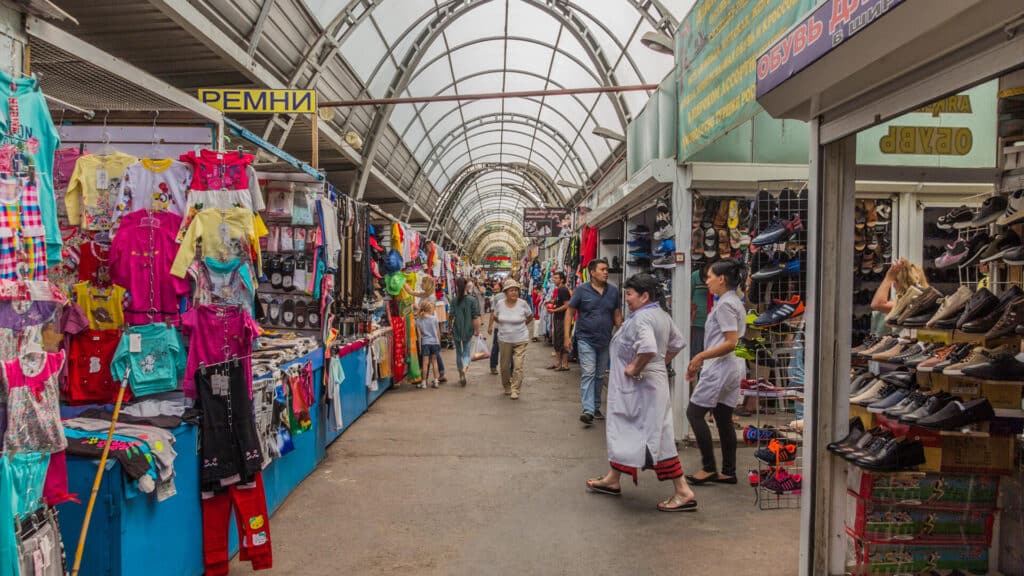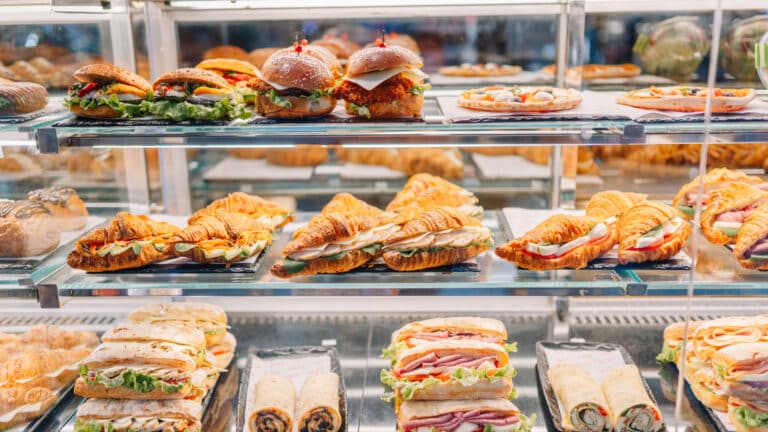
In 2024, Kazakhstan reported a 9.1% increase in the trade volume index, while retail saw a 9.8% pace of growth, outperforming wholesale at 8.6%. Madina Kabzhalyalova, an analyst at Halyk Finance, highlighted that this surge has raised questions among experts, with many referring to it as abnormal, as no fundamental factor could explain this phenomenon.
Trade contributes 16% to Kazakhstan’s GDP. Moreover, it was a key driver of the country’s 4% economic growth last year, despite a downturn in the mining sector.
In January 2024, trade volume plummeted from 11.3% to 3.5%. However, the growth rate began to accelerate significantly, gaining one percentage point each month, except in February and April. The recovery was driven by retail, which showed 6% growth starting in the second quarter and ended the year at nearly 10%.
Wholesale
At the end of the year, wholesale also posted significant figures, though lagged behind the record-breaking double-digit rates of 2023, when that surge was largely driven by extensive public expenses and investments in fixed capital of the mining sector.
«We believe that the exceptional results in 2023 were achieved thanks to the re-exports of goods to Russia and the associated economic benefits for the country. Exports to Russia increased by 40% in 2023 compared to 2021. However, the strengthening of sanction compliance and the risk of secondary sanctions gradually curtailed re-exporting operations, leading to a decline in overall trade, particularly wholesale, last year,» Kabzhalyalova explained.
In 2023, wholesale growth was driven by the development of the mining sector and extensive investing in it. However, over the first 11 months of 2024, investment volume in mining dropped by 23.3% year-on-year, while imports shrank by 3.3% over the first 10 months of the same year. In the second half of 2024, the wholesale growth rate, boosted by public incentives, rose to 8.6%, pushing investments in fixed capital back into positive territory.
Retail
At the same time, amid a moderate increase in real income and salaries, retail grew at a pace that outstripped many historical and macroeconomic trends.
«In 2024, retail emerged as a key catalyst for abnormal trade growth, once again deviating from historical trends. Over the past decade, the annual average growth in retail barely reached 4%. However, in 2023, this growth rose to 5.3% and surged to 9.8% the following year,» Kabzhalyalova noted.
Real personal income stagnated for two years and real wage growth, which stood at 2.9% between January and September, significantly lagged behind the pace of retail growth. Over the first 10 months of 2024, real income declined by 0.2%. Consumer lending partially mitigated the income drop, helping to sustain trade. However, despite the increase in consumption, imports of consumer goods declined throughout the year.
In 2024, the structure of retail trade by commodity groups remained largely unchanged, with food products accounting for approximately 33% of the trade and non-food products making up 67%. However, sales channels underwent a significant transformation, as the share of individual entrepreneurship — including merchants trading at bazaars — increased from 38% to 45%. The reason behind this shift is unclear, but Kabzhalyalova attributes it to government measures aimed at bringing illegal business activities out of the shadow economy, particularly through the regulation of mobile money transfers.
«Despite the generally positive results, the trade trend was accompanied by certain compromising factors, which could signal potentially unstable growth in the future,» Kabzhalyalova concluded.













